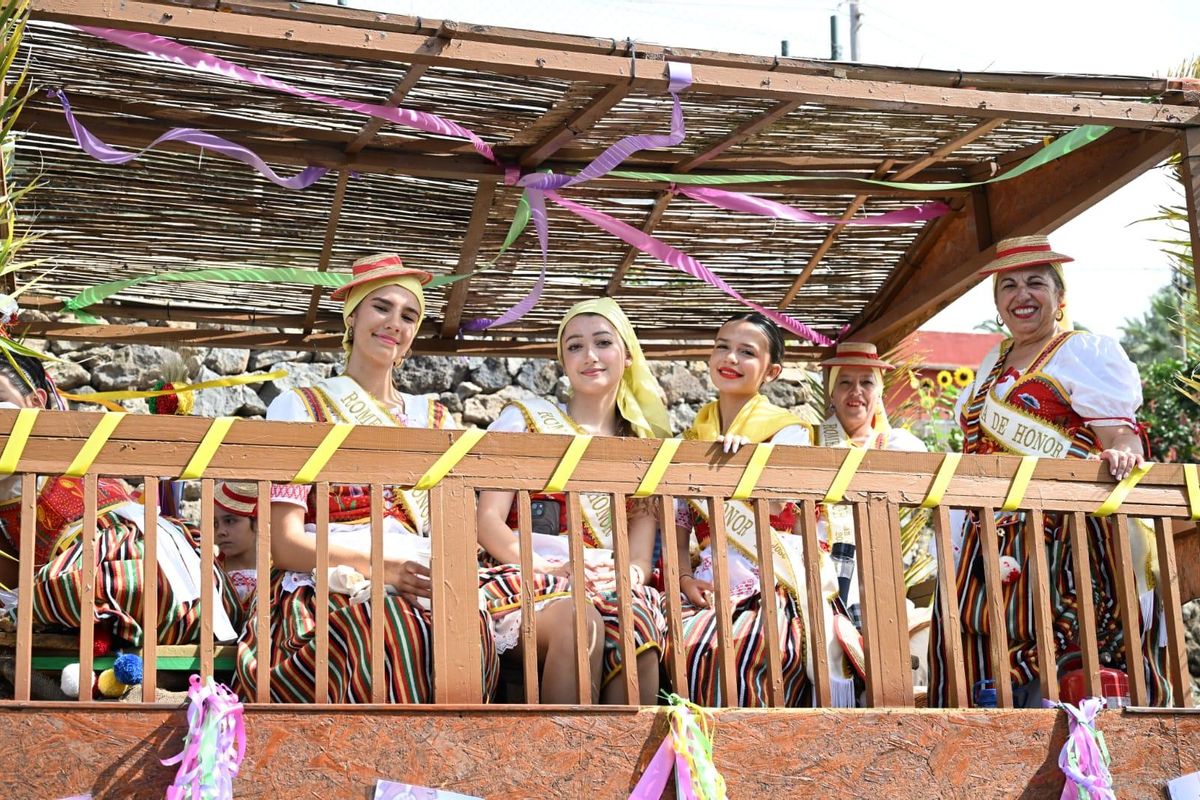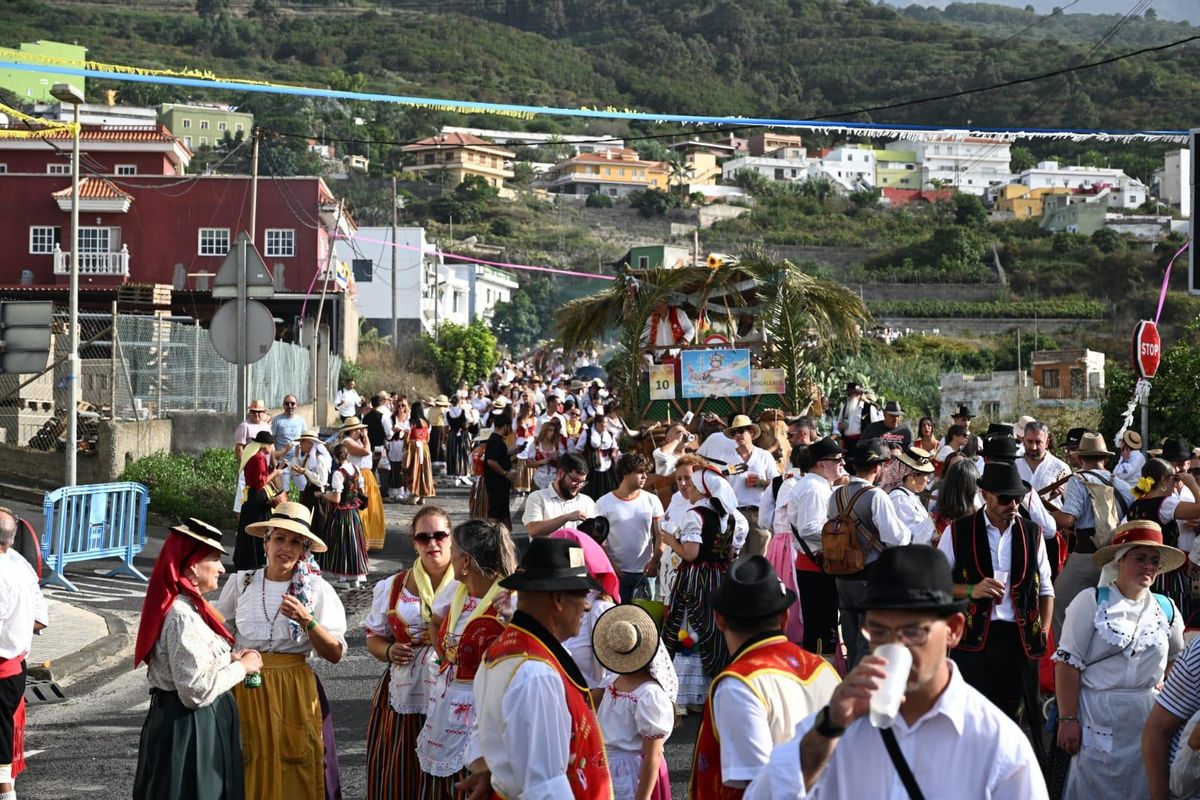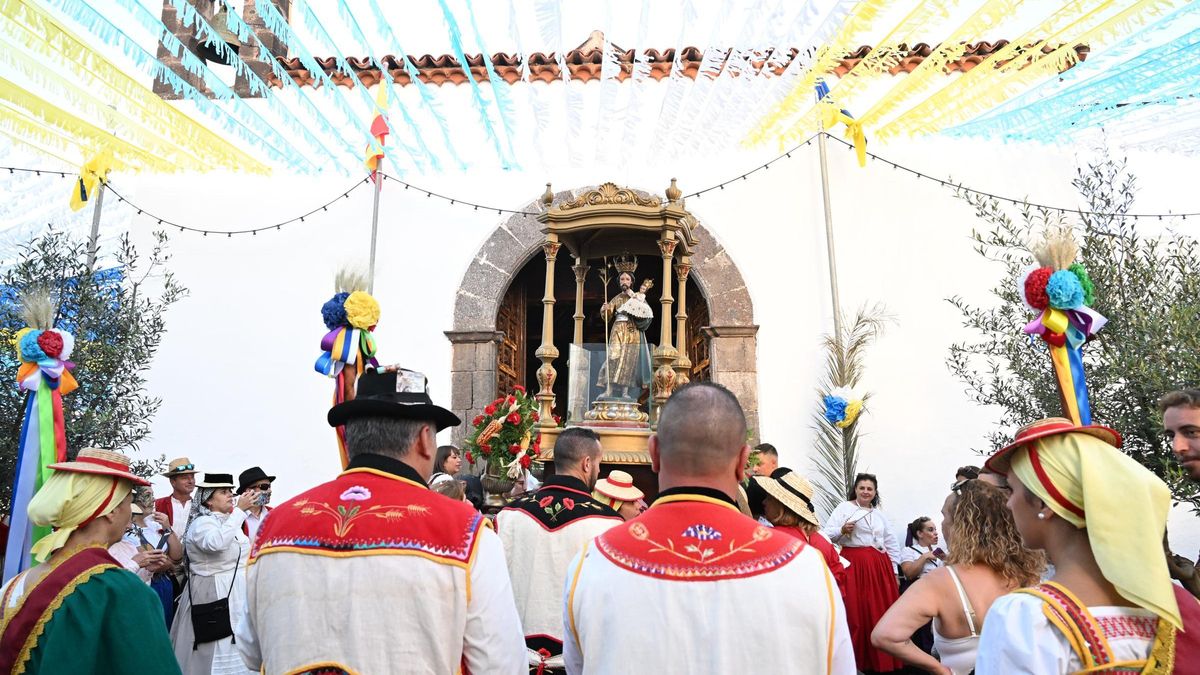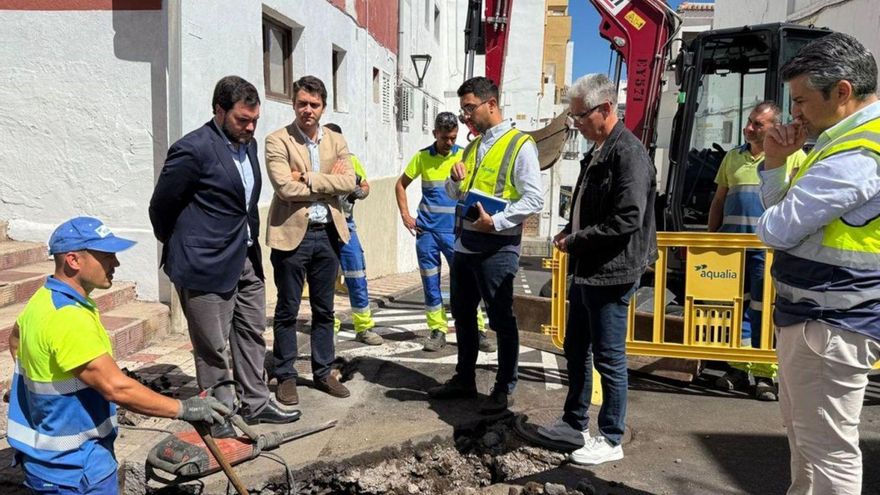Scorching heat with temperatures reaching 36 degrees at three in the afternoon. At least, that was the reading from the thermometer measuring the outdoor temperature of one of the microbuses that transported pilgrims for free from the vicinity of the San Juan de la Rambla Town Hall square to the San Pancracio square in Los Canarios, the traditional starting point of the pilgrimage in honour of San José, also known as La Amable.
There was still an hour to go before the festive procession began, and it was clear that the heat would not dampen the spirits of this welcoming town, which is home to around 5,000 residents. Despite the sweltering heat along the TF-351 road [the route the pilgrims take to reach the Domingo Reyes Afonso square], approximately 3,000 people participated in the pilgrimage, according to local police sources. But it wasn’t just pilgrims on foot; dozens of ox-drawn carts [hired by the Department of Fairs, Festivities, and Pilgrimages] and a small convoy of motorless carts and decorated floats also accompanied the patron saint.
Traditional Celebration
Just before the pilgrimage began, the traditional mass in honour of San José was held, and once the religious service concluded, the celebrations spilled out into the streets. Skewers of meat, spicy sausages, and grilled sausages were being prepared on the smoke-filled barbecues of the carts and shared among the pilgrims on foot. Hard-boiled eggs, glasses of local wine, beer, and water were on hand to quench their thirst, while musical groups entertained them with traditional Canarian folk songs.

Romería de San José in San Juan de la Rambla / El Día
Folk Music
The music was provided by groups such as Atahona, Parranda Familia Los Alzados, Timcua, Perenkén, Tercera Edad de Icod el Alto, Imoque, La Limera, Tercera Edad Baray, Menceyes de Daute, and Ayadirma de Daute. In addition to the songs, a strong “Viva San José” echoed back from the crowd, met by another loud and collective “viva.”
The Romería de San José, which celebrates its 30th anniversary this year, is a festive occasion that the residents of Rambla have embraced with such affection that it feels as though it has been celebrated for over a century.
3,000 people and dozens of carts and floats participate in a festivity marking the end of summer
“It is a day for reuniting many of the people who were born and raised in San Juan de la Rambla,” comments Ruth Abreu, owner of the flower shop Flower Culture. She has been in charge of decorating the basin where San José is processed for three years. “I have always been very proud to be from San Juan de la Rambla. At 35, this festivity is a wonderful way to reconnect with people you might have lost touch with after leaving school for studies or work. The pilgrimage and the festivities provide opportunities to meet people you haven’t seen for a year,” she emphasises. Abreu states that the pilgrimage is known as La Amable because people share everything they have; it reflects our character.”

Romería de San José in San Juan de la Rambla / El Día
Rubén Díaz rides in the cart El Grupito and has participated in the pilgrimage almost every year. “We are a group of families, some siblings, some cousins, and a few friends who join in.” “There’s no shortage of food and drink here. We’re just lighting the fire to start grilling the skewers. So if you’d like, you know where to come,” Díaz shares with a smile.
“It is a very popular pilgrimage, filling the road, which is about six metres wide, from side to side, and there can be two kilometres between the first and last cart. The number of participants is impressive, and it is called La Amable because pilgrims share everything they have, unlike in other places where you may ask for food and often receive nothing,” asserts Carlos Rodríguez.
Abraham Pérez is a member of a group of friends belonging to a motorcycle club called Fogaleros. This is also the name they chose for their cart. “This group of motorcyclists has recently been recognised for promoting initiatives for blood donation; we are among those who actively support such actions,” he notes. Now at the pilgrimage, this motorcyclist group is quite generous, as a moment after finishing his comment, Abraham Pérez began offering his grilled meat skewers, bottles of water, wine, and beer.
The Romería de San José marks the end of summer and concludes the festivities dedicated to the saint, co-patron of the northern municipality. This event also prides itself on being one of the safest festive gatherings in northern Tenerife, having registered no serious incidents once again this year.














